
The Diocese of Nola is a Latin diocese of the Catholic Church in Italy, suffragan of the Archdiocese of Naples. Its seat is the Campanian city of Nola, now a suburb of Naples. Its cathedral is dedicated to the Assumption. The dedication was originally to S. Stephen, the Protomartyr, but after the second reconstruction the dedication was changed to the Assumption. It is traditionally credited with the introduction of the use of bells into Christian worship.

The Archdiocese of Capua is a Latin diocese of the Catholic Church in Capua, in Campania, Italy, but its archbishop no longer holds metropolitan rank and has no ecclesiastical province. Since 1979, it is a suffragan of the Archdiocese of Napoli, i.e. no longer has its own ecclesiastical province nor metropolitan status.

The Archdiocese of Amalfi-Cava de' Tirreni is an archdiocese of the Latin Church of the Catholic Church, with its episcopal see at Amalfi, not far from Naples. It was named Archdiocese of Amalfi until parts of the Diocese of Cava e Sarno were merged with it on September 30, 1986.

The Diocese of Nardò-Gallipoli is a Latin diocese of the Catholic Church in southern Italy. It is a suffragan of the Archdiocese of Lecce.
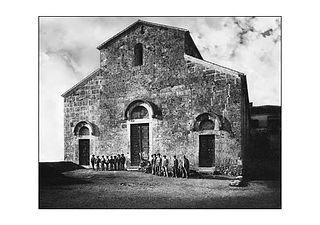
The Roman Catholic Diocese of Ferentino existed until 1986, when it was united into the new diocese of Frosinone-Veroli-Ferentino.

The Diocese of Frosinone-Veroli-Ferentino is a Latin Church ecclesiastical territory or diocese of the Catholic Church in Italy. It has existed since 1986. In that year, the Diocese of Ferentino was united into the Diocese of Veroli-Frosinone, which was the name of the historic Diocese of Veroli from 1956. It is immediately exempt to the Holy See and not part of an ecclesiastical province.

The Diocese of Nocera Umbra was a Catholic diocese in Umbria, Italy.

The Diocese of Tivoli is a Latin Church ecclesiastical territory or diocese of the Catholic Church in Latium, Italy, which has existed since the 2nd century. In 2002 territory was added to it from the Territorial Abbey of Subiaco. The diocese is immediately exempt to the Holy See.

The Diocese of Isernia-Venafro is a Latin Church diocese of the Catholic Church in Molise. It is a suffragan of the archdiocese of Campobasso-Boiano. In 1852 the historic diocese of Isernia was combined with the diocese of Venafro, to form the diocese of Isernia e Venafro. The seat of the present bishop is Isernia Cathedral, while Venafro Cathedral has become a co-cathedral in the new diocese.
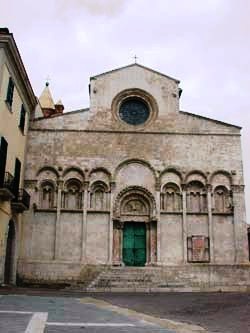
The Diocese of Termoli-Larino is a Latin Church diocese of the Catholic Church situated in the province of Campobasso, region of Molise. The commune of Termoli is an important regional seaport. The diocese has existed in its current configuration since 1986, when the diocese of Larino was suppressed and added to its territory. It is a suffragan of the archdiocese of Campobasso-Boiano.

The diocese of Teano-Calvi is a Latin diocese of the Catholic Church in Campania, southern Italy, created in 1986. It is a suffragan of the Archdiocese of Naples. The historic Diocese of Teano and diocese of Calvi Risorta were united in 1818, forming the diocese of Calvi e Teano.

The Diocese of San Severo is a Latin diocese of the Catholic Church in Apulia. It is a suffragan of the Archdiocese of Foggia-Bovino.

The Diocese of Caserta is a Latin diocese of the Catholic Church in Campania, southern Italy. It is a suffragan of the Archdiocese of Naples. In 1818 Pope Pius VII united this see with the diocese of Caiazzo, but Pope Pius IX made them separate sees. In 2013 in the diocese of Caserta there was one priest for every 1,703 Catholics; in 2016, there was one priest for every 2,008 Catholics. The diocesan Major Seminary currently (2019) has four seminarians.
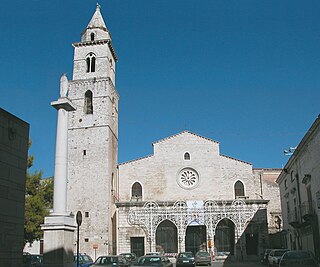
The Diocese of Andria is a Latin diocese of the Catholic Church in Apulia, seated at Andria Cathedral which is built over a church dedicated to St. Peter, about ten miles southwest of Trani. It is a suffragan of the archdiocese of Bari-Bitonto. The diocese has 39 parishes, with one priest for every 1,573 Catholics.
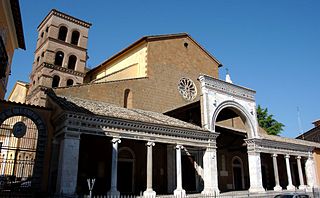
The Diocese of Civita Castellana is a Latin Church ecclesiastical territory or diocese of the Catholic Church in Latium, central Italy. It has existed in the current form since 1986, when the Diocese of Nepi e Sutri was united into the Diocese of Civita Castellana, Orte e Gallese. The Diocese of Gallese had been added to the Dioceses of Civita Castellana and Orte in 1805. The name of the diocese was shortened in 1991, in accordance with Vatican policies. The diocese of Civita Castellana is immediately exempt to the Holy See.
The Italian Catholic diocese of Lacedonia, a suffragan of the archdiocese of Benevento in Campania, existed until 1986 when incorporated into the reorganized Roman Catholic Diocese of Ariano Irpino-Lacedonia.
The Italian Catholic diocese of Castellammare di Stabia, on the Bay of Naples, existed until 1986. In that year it became part of the archdiocese of Sorrento-Castellammare di Stabia.
The Diocese of Acerno was a Roman Catholic diocese based in Acerno, a distance of 68 km (42 mi.) from Naples in southern Italy, with the bishop's seat in Acerno Cathedral. Created in the 11th century, in 1818, the diocese was granted in perpetual administratorship to the archbishops of Salerno. In the reorganization of ecclesiastical provinces in 1986, Acerno was suppressed, to create the Archdiocese of Salerno-Campagna-Acerno.

The Diocese of Accia was a Roman Catholic bishopric on the island of Corsica. It is now a titular diocese. The diocese was located in the town of Accia in the interior region of Haute-Corse, which was destroyed and from which only some ruins remain. Established in 824 AD it was merged with the Diocese of Mariana in 1554. In 1570 the Bishop of Mariana and Accia moved his seat to Bastia.
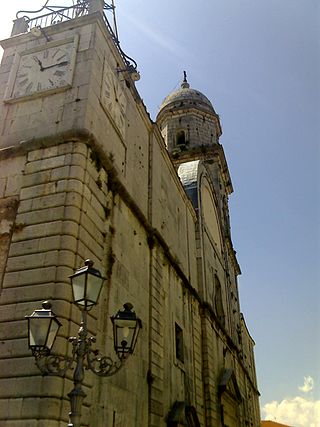
Diocese of Nusco was a Roman Catholic ecclesiastical territory in Campania, southern Italy, and was a suffragan of the archdiocese of Salerno. In 1986 the diocese was suppressed, and its territory was united with the archdiocese of Conza-Sant'Angelo dei Lombardi-Bisaccia, to form the Archdiocese of Conza-Sant'Angelo dei Lombardi-Nusco-Bisaccia.
















